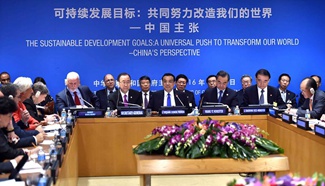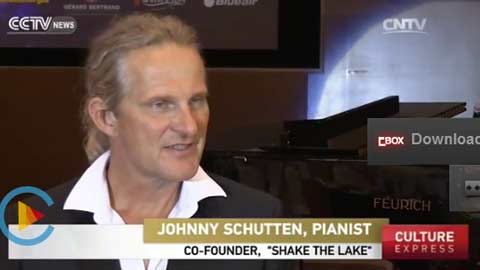WUHAN, Sept. 21 (Xinhua) -- For employees of Wuhan Iron and Steel Group, the company's merger plan, announced Tuesday, means the end of the 58-year-old steel mill, the first to be built after New China was founded in 1949.
According to the Shanghai bourse, Baosteel Group will provide existing shareholders of Wuhan Iron and Steel with stock compensation.
Wuhan Iron and Steel was China's first special steel maker when it started production in 1958. In 2015, 25.7 million tonnes of crude steel rolled off its production lines, ranking it sixth among the nation's steel makers.
However, its listed arm posted a net loss of 7.5 billion yuan (1.1 billion U.S. dollars) in 2015, with a total debt of 70 billion yuan.
Under the merger plan, Baosteel will acquire the production arm of Wuhan Iron and Steel. While, Wuhan Iron and Steel Group will retain all non-steel business.
Those that work at Wuhan Iron and Steel generally welcomed the merger plan, as Baosteel is known to be well managed.
"The merger is a market-oriented operation driven by a need to restructure rather than a mandated move to overhaul the lumbering production," said Zhang Chunxiao, a professor with the Chinese Academy of Governance.
He said the new entity after the merger would have more incentive to integrate its market resources, which could lower costs in the upcoming steel production cut.
China plans to cut its steel production capacity by 150 million tonnes by 2020, according to a government plan unveiled February.
The combined production capacity of the two firms was 60.7 million tonnes last year, which would make the new entity the world's second biggest producer by capacity -- behind ArcelorMittal.
"Being the world's second largest steel maker is not the most important thing. The merger will coordinate various aspects of the business, such as logistics and R&D," said Chen Derong, president of Baosteel.
Baosteel has vowed to cut its steel production by 9.2 million tonnes between 2016 and 2018.
He said production upgrading is the priority in the restructuring drive.
The merger is a milestone in China's steel industry restructuring. It aims to improve efficiency through reshuffles to form a dozen powerful steel mills with advanced steel making technology. Following this merger plan, more restructuring of steel makers is expected. Next on the agenda is the restructuring of Ansteel and Benxi Steel Group, both steel giants based in the northeastern province of Liaoning.










